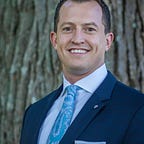Aspirations to be an Architect
& my untraditional journey of becoming one.
Growing up in Shenandoah County didn’t fully support my childhood dream of being an architect. Living in the rural northwest country surrounded by cattle farms and a driveway that went through a turkey farm, beautiful buildings weren’t the norm. My first big city trip was to either Washington DC suburbs or Henrico County to visit family. Yet, I was always interested in how our built environment shaped how we interact as people. Institutionally designed school buildings from the 1950s were the norm. I think my attraction to architecture was when my stepdad helped build a modern home in Mt. Jackson, Virginia. As a young child, I remember walking through that work site and imagining the walls and rooms and how I would live in this yet-to-be-finished house.
There weren’t CAD or drafting classes offered at my high school, but I would draw my own creations of homes and floorplans. I would look through old Architecture Digest magazines and recreate buildings from photos. When I applied for college, I selected schools that had architecture programs to keep the dream alive. I was not accepted for architecture but found my purpose in Political Science. Some of my best friends from Virginia Tech were architecture majors, so my passion in other ways was still a part of my life.
Throughout my career, while I didn’t design buildings, I was introduced to the architectural process of Design Thinking. My first experience with Design Thinking was working around Code for America projects and cities. I watched how transformative solutions to complex social challenges were shaped by this foundational architecture approach. Through my innovation work in City Hall, I continued to find myself surrounded by architects and designers. While I had a passion for architecture, I believe my journey was to work with an architectural approach to how I see the world.
Design Thinking focuses on building Empathy. It explores how people navigate life to observe from their perspective. For architects, it's how people navigate space and place—social innovation is about understanding how people face challenges, situations, and problems—building empathy first shapes understanding the situation as an experience, not just the outcome. This reveals many new insights about the situation you need to understand before trying to solve it. I don’t like the phrase ‘being able to stand in their shoes’ because this is about a moment, and truly, standing in someone else’s shoes requires more than just a moment. I believe it's more about being able to stand beside them to understand better what they are facing.
Leveraging the steps of Design Thinking has been my approach to many of the projects that have shaped my career. Beginning with the IBM Smarter Cities Challenge in 2013, we explored how to reinvest in neighborhoods while limiting the impacts of gentrification. This project introduced me to social enterprise, which is now a topic I teach about at the Batten School at the University of Virginia. The IBM project transitioned to my role with the Anti-Poverty Commission, which later created the Office of Community Wealth Building.
In 2015, when I spearheaded a project to improve access to healthcare for uninsured residents in Richmond with Code for America, I had my first deep dive into the Design Thinking process. For six months, I worked with three fellows to better understand the process of how our neighbors accessed healthcare when they did not have insurance. At first glance, many leaders felt that the issue was access and education, but as we sat in waiting rooms, talked with people, and engaged with front-level staff, we saw a different story. As we learned how people navigated this complex healthcare system, we soon realized why people use the Emergency Room over other healthcare options. It wasn’t access or education; it was the hour-long wait. Filling out forms proving their low-income eligibility to be asked to confirm these details was difficult, personal, and time-consuming. We saw enormous challenges and barriers when we compared this process to our own experience. When I go to the doctor, I set up an appointment, show up, present my ID and insurance card, and wait for my name to be called. In this scenario, we saw people holding sick children, wrestling with clipboards and paperwork, and struggling to fill out complicated forms. We observed many of them having to ask receptionists to explain details of the information needed on the form. This process was needed for the initial visit, again to fill a prescription, and even more times if further tests or visits were needed.
The problem was the burden placed on residents to prove their eligibility each step of the way. These forms required varied levels of personal information such as tax returns, utility bills, pay stubs, and other documents. Many people had to carry these personal documents on the bus to access healthcare. This cumbersome process needed to be streamlined to remove this barrier to access to the healthcare system. Our focus was to make the healthcare experience consistent for everyone, regardless of income level.
Architecture has shaped my career; while I do not design buildings, I do help shape solutions to problems using the same process. Many of my accomplishments throughout my career were shaped by architecture, whether by their Design Thinking process or with people who are professional architects. On Thursday, October 19th, the AIA Richmond Chapter gave me an Honorary Membership. I have finally become an architect. Even if by honorary appointment, my work as a social innovation was recognized along with my work on City Council in advancing policies and projects shaping our city's future. I am honored to receive this honorary membership and look forward to continuing my passionate focus on applying Design Thinking in how we create our equitable city.
